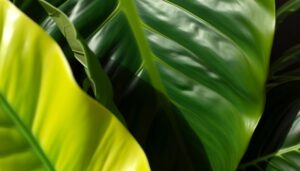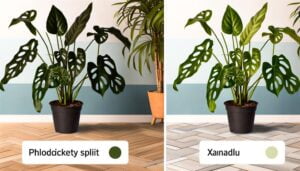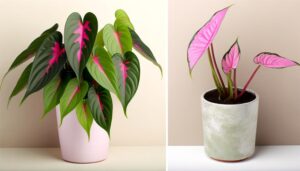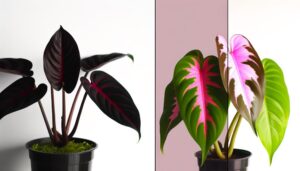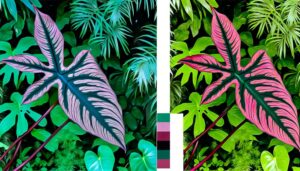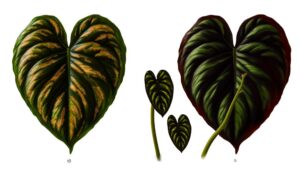Heart Leaf Philodendron Vs Micans: Which is Better?
The Heart Leaf Philodendron (Philodendron hederaceum) and Philodendron micans, originating from Central and South America, belong to the Araceae family and flourish in humid, well-drained environments.
Philodendron hederaceum has glossy, heart-shaped leaves up to 12 inches, while Philodendron micans features velvety, iridescent leaves typically up to 8 inches.
The former prefers bright, indirect light and is perfect for vertical displays, whereas the latter thrives in medium to low indirect light and excels in hanging displays. These subtle differences in morphology and growth habits influence their ideal care and aesthetic applications.
Keep delving for a detailed comparison.
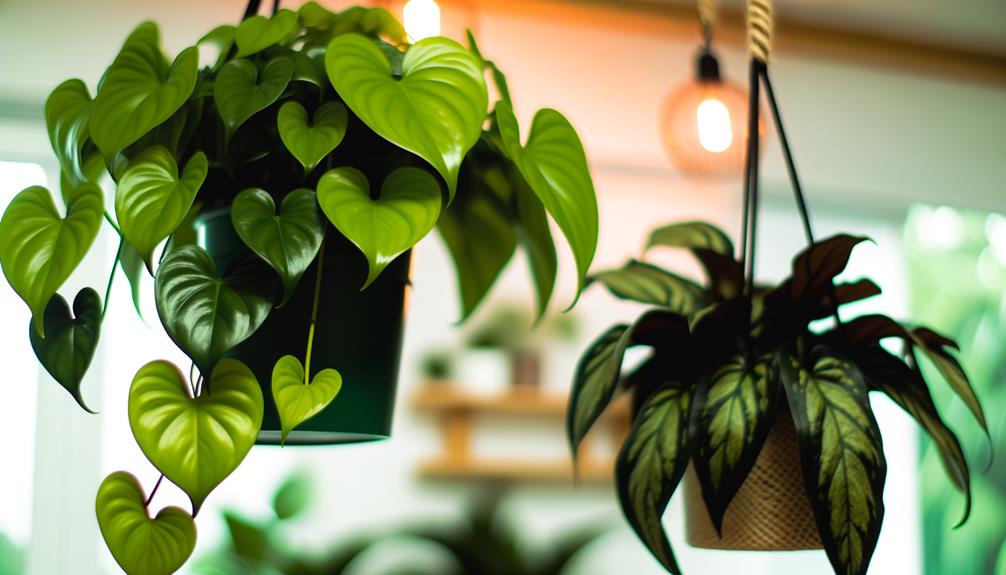
Heart Leaf Philodendron Vs Micans
| Characteristics | Heart Leaf Philodendron | Philodendron Micans |
|---|---|---|
| Leaf Texture | Glossy, smooth leaves | Velvety, iridescent leaves |
| Leaf Size | Larger, up to 3 inches wide and 4 inches long | Smaller, heart-shaped leaves |
| Temperature | 65°F – 80°F | 70-90 degrees Fahrenheit |
| Watering | Prefers drying out slightly between waterings | Water when top 2-3 inches of soil have dried out |
| Light Requirements | Bright, indirect sunlight | Bright, indirect sunlight, can adapt to low-light conditions |
| Soil and Fertilization | Well-drained, moisture-retaining soil, pH 5.5-6 | Well-drained, moisture-retaining soil, pH 5.5-6 |
| Humidity | Moderate humidity levels | Slightly higher humidity levels |
Origins and Background
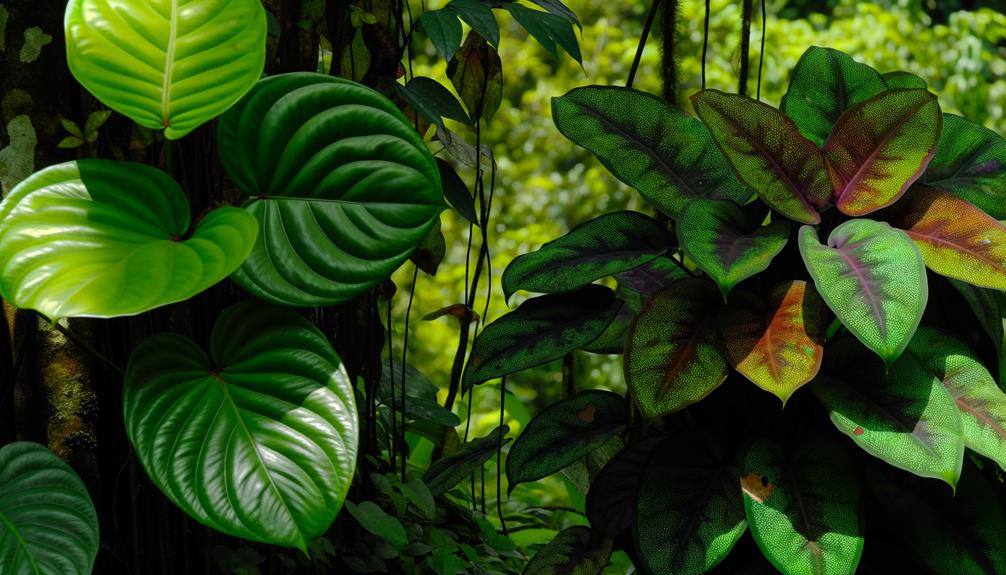
The Heart Leaf Philodendron (Philodendron hederaceum) and Philodendron micans, both members of the Araceae family, originate from the tropical rainforests of Central and South America. These species thrive in humid environments with well-drained soils, benefiting from the rich biodiversity and microclimates provided by their native ecosystems.
Both taxa exhibit climbing or trailing growth habits, utilizing aerial roots to anchor themselves to trees and other structures. Philodendron hederaceum, often referred to as the sweetheart plant, and Philodendron micans, known for its velvety foliage, share a common genus but differ in their morphological and physiological adaptations.
Their evolutionary success in diverse forest strata underscores their ecological significance and horticultural appeal.
Leaf Characteristics
Both Philodendron hederaceum and Philodendron micans exhibit distinct leaf morphology, contributing significantly to their identification and horticultural value. Leaf characteristics, including shape, texture, and coloration, distinguish these taxa.
Philodendron hederaceum leaves are typically heart-shaped, smooth, and glossy, whereas Philodendron micans leaves are velvety with a unique iridescence.
The following table delineates specific leaf attributes for each species:
| Characteristic | Philodendron hederaceum | Philodendron micans |
|---|---|---|
| Leaf Shape | Heart-shaped | Heart-shaped |
| Leaf Texture | Smooth, glossy | Velvety, soft |
| Leaf Coloration | Dark green | Bronze-green with iridescence |
| Juvenile Leaves | Smaller, same texture | Smaller, more pronounced velvet |
| Mature Leaves Size | Up to 12 inches | Typically smaller, up to 8 inches |
This comparison underscores the subtle yet significant differences in leaf morphology, aiding in proper identification and cultivation.
Growth Habits
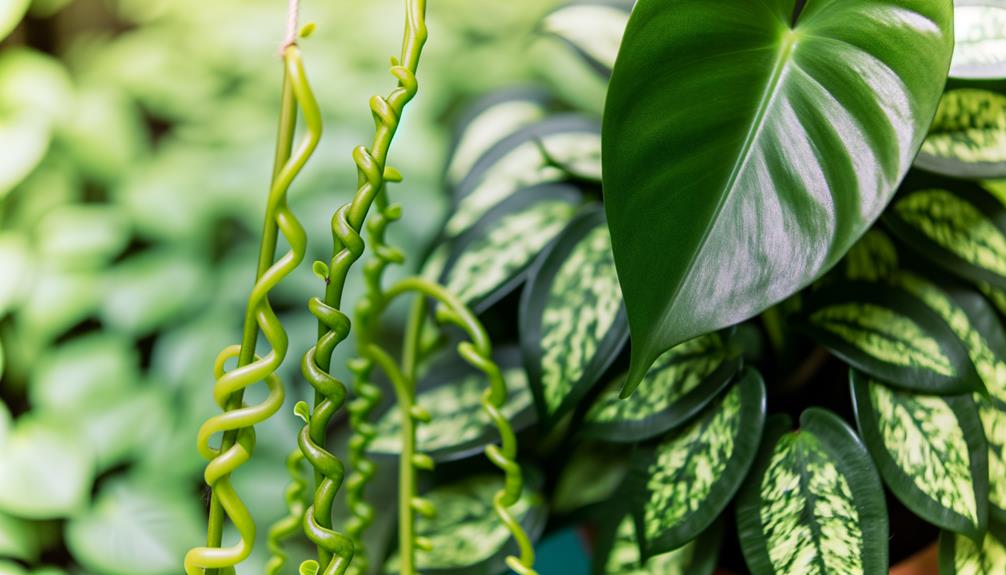
Philodendron hederaceum and Philodendron micans exhibit varying growth habits, influencing their suitability for different horticultural applications and environments.
Philodendron hederaceum, commonly known as the Heart Leaf Philodendron, demonstrates a robust climbing habit, utilizing aerial roots to ascend structures. This species can attain significant lengths, making it ideal for vertical gardening or trellised displays.
Conversely, Philodendron micans, a variant of P. hederaceum, showcases a trailing or cascading growth pattern. Its stems are less vigorous in climbing but excel in creating lush, hanging displays. The velvety texture of P. micans leaves adds an ornamental appeal, enhancing its use in hanging baskets or as a ground cover in suitable climates.
Understanding these growth habits aids in the best placement and cultivation strategies.
Care Requirements
Cultivating Philodendron hederaceum and P. micans requires understanding their distinct care needs, which encompass lighting, watering, and soil preferences.
Philodendron hederaceum thrives in bright, indirect light, while P. micans prefers medium to low indirect light. Both species necessitate well-draining soil, ideal with a mix of peat, perlite, and orchid bark to prevent root rot.
Watering should be consistent yet moderate; the substrate must remain moist but not waterlogged. Overwatering can lead to detrimental root decay. Both species benefit from high humidity levels, ideally between 60% and 70%.
Fertilization during the growing season, using a balanced, water-soluble fertilizer, promotes healthy growth. Following these guidelines guarantees robust and vibrant Philodendron specimens.
Aesthetic Differences
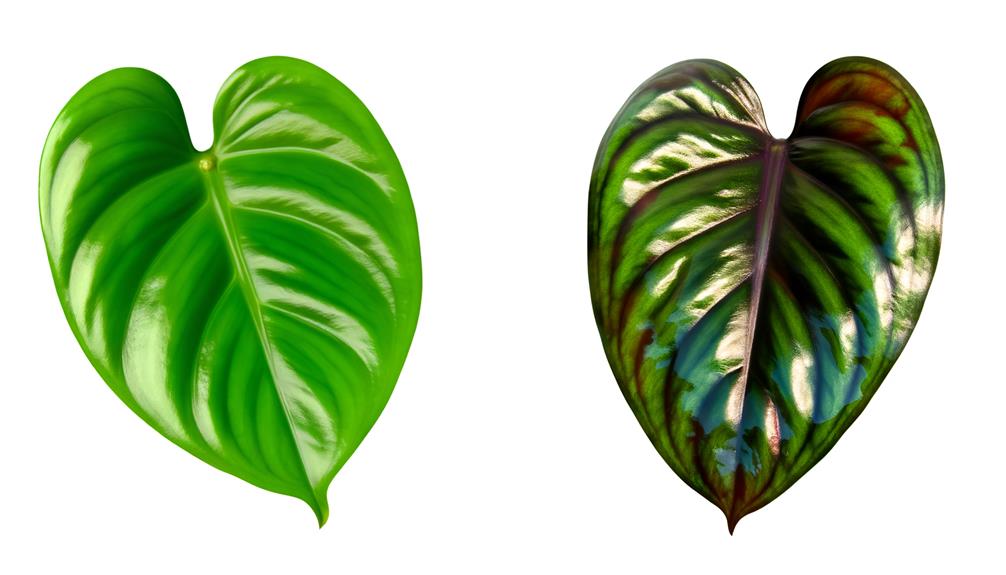
In addition to their specific care requirements, Philodendron hederaceum and P. micans exhibit distinct aesthetic differences that make each species uniquely attractive.
Philodendron hederaceum, commonly known as the Heart Leaf Philodendron, features glossy, heart-shaped leaves that are typically dark green and smooth in texture.
In contrast, P. micans, often referred to simply as Micans, showcases velvety, heart-shaped leaves with iridescent qualities, reflecting hues of bronze to deep green depending on light conditions. The micans’ leaves also have a slightly more elongated shape compared to the broader foliage of P. hederaceum.
These aesthetic attributes not only enhance their visual appeal but also influence their suitability for various interior design applications, catering to different stylistic preferences.
Conclusion
The juxtaposition of Heart Leaf Philodendron (Philodendron hederaceum) and Philodendron micans reveals nuanced distinctions. While both species share Araceae family roots, Heart Leaf Philodendron boasts glossy, heart-shaped leaves, contrasting with the velvety, iridescent foliage of Micans.
Growth habits also diverge, with the former exhibiting more vigorous climbing tendencies. Care requirements align, yet Micans demand slightly higher humidity.
Aesthetically, the two plants cater to different sensibilities, with Heart Leaf Philodendron offering classic appeal, and Micans presenting a more exotic allure.

